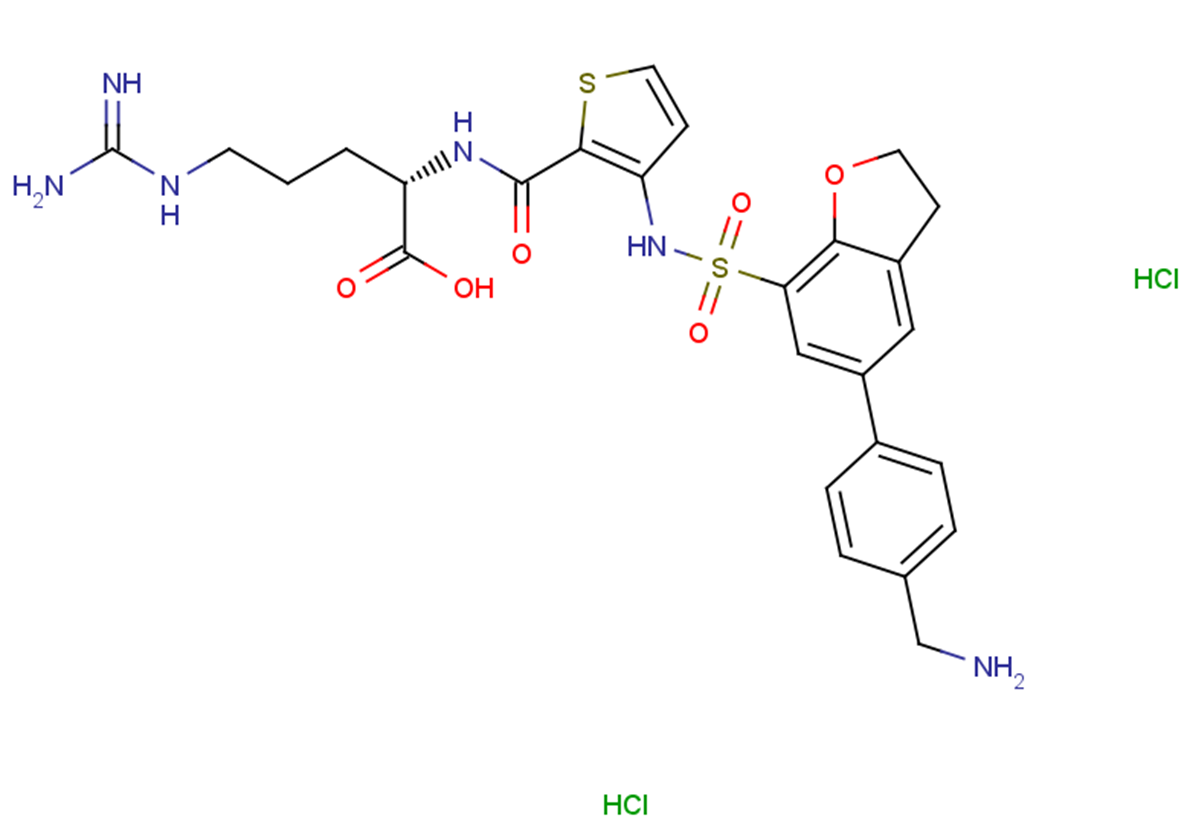| Description |
EG01377 2HCl is a potent, bioavailable and selective inhibitor of neuropilin-1 (NRP1) with a Kd value of 1.32 μM and an IC50 value of 609 nM for both EG01377 2HCl against NRP1-a1 and NRP1-b1.EG01377 exhibits anti-angiogenic, antimigratory and antitumor activities.
|
| In Vitro |
EG0 1377 2HCl (30 μM) effectively diminishes HUVEC cell migration induced by VEGFA. Additionally, EG01377 2HCl leads to reductions in network area, length, and branching points.[1]EG0 1377 2HCl (3-30 μM; 30 minutes) inhibits vascular endothelial growth factor A (VEGF-A) stimulated tyrosine phosphorylation of VEGF-R2/KDR with an IC50 of 30 μM.[1] EG0 1377 2HCl (30 μM; 5 days) can delay the VEGF-induced wound closure.[1]EG0 1377 2HCl diminishes VEGF-triggered angiogenesis. Moreover, when combined with VEGFA, EG01377 2HCl curtails spheroid outgrowth of A375P (malignant melanoma) cells.[1]EG0 1377 2HCl (500 nM; 2 h) blocks the production of transforming growth factor beta (TGFβ) by Nrp1+ regulatory T-cell SMAD3/AKT (Tregs) in the presence of tumor cell-derived factors.[1]
|
| In Vivo |
EG0 1377 2HCl (2 mg/kg; i.v.; BABL/c female mice) possesses a half-life of 4.29 hours, allowing for once-a-day dosing to be maintained in mice.[1]
|
| References |
1. Powell J, et al. Small Molecule Neuropilin-1 Antagonists Combine Antiangiogenic and Antitumor Activity with Immune Modulation through Reduction of Transforming Growth Factor Beta (TGFβ) Production in Regulatory T-Cells. J Med Chem. 2018;61(9):4135-4154.
|
